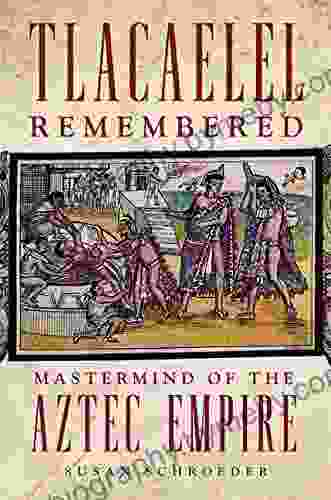Montezuma II: Mastermind of the Aztec Empire

Step into the captivating world of Montezuma II, the legendary Aztec emperor who ruled over the vast and vibrant empire at its zenith. His reign marked a golden age of Aztec civilization, leaving behind an enduring legacy that continues to fascinate historians and enthusiasts alike.
4.4 out of 5
| Language | : | English |
| File size | : | 8569 KB |
| Text-to-Speech | : | Enabled |
| Screen Reader | : | Supported |
| Enhanced typesetting | : | Enabled |
| Print length | : | 233 pages |
The Rise of a Monarch
Early Life and Lineage
Montezuma II, born as Moctezuma Xocoyotzin, emerged from the noble lineage of the Aztec ruling class. He was the son of Axayacatl, the previous emperor, and belonged to the elite Eagle and Jaguar warrior societies.
From a young age, Montezuma displayed exceptional military prowess and political acumen. He quickly rose through the ranks, gaining prominence as a skilled strategist and competent administrator.
Accession to the Throne
Upon the death of his father in 1486, Montezuma II ascended to the throne as the ninth Aztec emperor. He inherited a vast empire that stretched across central Mexico, spanning from the Gulf of Mexico to the Pacific Ocean.
The Aztec Empire was a complex and highly organized civilization, with a sophisticated system of government, religion, economy, and social structure. Montezuma II inherited a formidable legacy, and he was determined to uphold and expand the empire's power and influence.

Reign of Grandeur
Military Conquests and Expansion
Montezuma II embarked on ambitious military campaigns to consolidate and expand the Aztec Empire. He led his armies to conquer neighboring city-states and kingdoms, extending the empire's reach and securing its dominance.
Through a combination of military prowess and diplomatic alliances, Montezuma II significantly expanded Aztec territories, adding vast lands and resources to the empire's control.
Administrative Reforms
Beyond military conquests, Montezuma II implemented significant administrative reforms to strengthen the empire's infrastructure and governance. He established a centralized bureaucracy, appointing trusted officials to oversee various aspects of the empire's administration.
Montezuma II also reorganized the Aztec tax system, ensuring a steady flow of tribute from conquered territories. These reforms contributed to the empire's stability and prosperity.
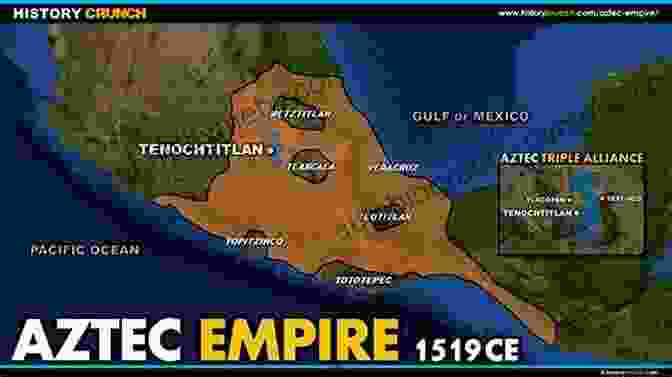
Cultural and Artistic Flourishing
Religious and Ritual Practices
Montezuma II was a devout follower of the Aztec religion, which played a central role in Aztec society. He presided over grand religious ceremonies and festivals, honoring the Aztec gods and ensuring the empire's divine protection.
The Aztec religious beliefs were intertwined with the empire's political and social structures. Montezuma II used religious rituals to legitimize his rule and maintain the loyalty of his subjects.
Artistic Patronage
Montezuma II was a great patron of the arts, encouraging the development of various artistic forms within the Aztec Empire. During his reign, Aztec artisans produced exquisite sculptures, paintings, jewelry, and textiles.
The Aztecs were renowned for their skilled craftsmanship, and their artistic creations continue to captivate and inspire artists and historians alike.
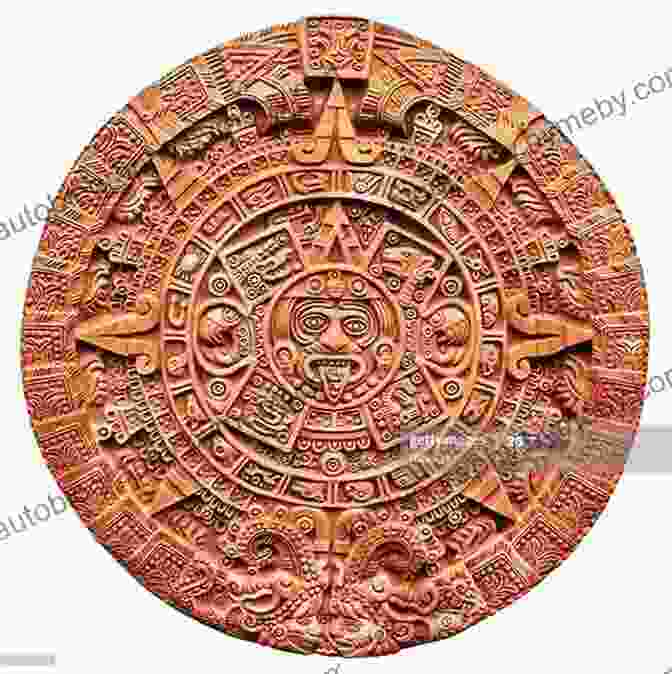
Encounter with the Spanish
Arrival of Hernán Cortés
In 1519, the Spanish conquistador Hernán Cortés arrived on the shores of Mexico. Montezuma II initially welcomed the Spaniards as potential allies, hoping to gain their support against rival Aztec city-states.
However, as Cortés and his men advanced into the Aztec heartland, their intentions became clear. The conquistadors sought to conquer the empire and claim its vast wealth for themselves.
Siege and Fall of Tenochtitlan
Montezuma II attempted to negotiate with Cortés but was taken captive by the Spaniards. In the ensuing siege of Tenochtitlan, the Aztec capital, Montezuma's life was tragically cut short.
The fall of Tenochtitlan in 1521 marked the end of the Aztec Empire and the beginning of Spanish rule in Mexico. Montezuma II's legacy as the last Aztec emperor remains deeply etched in the history of Mesoamerica.
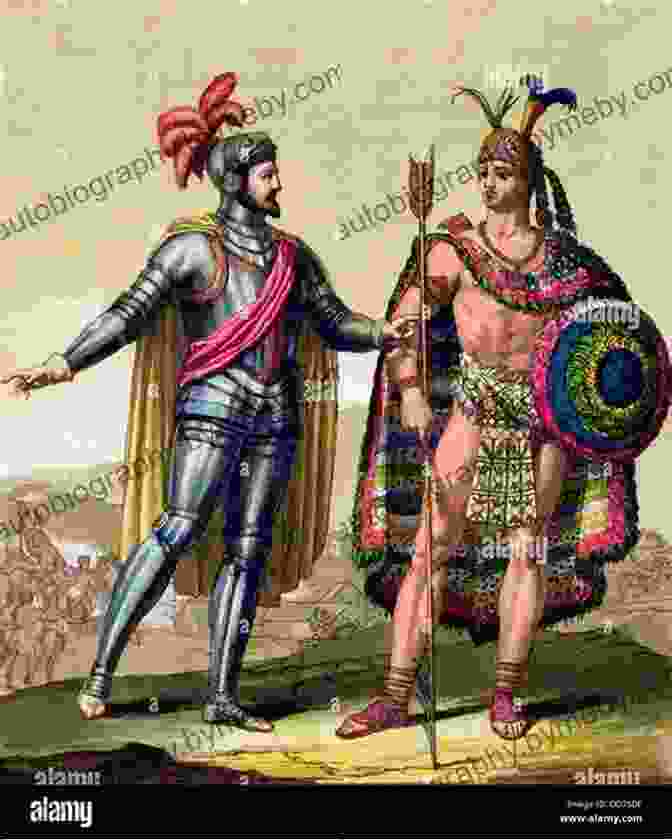
Legacy and Impact
Legacy in Aztec History
Montezuma II's reign left a profound impact on Aztec history and culture. He presided over the empire at its peak, expanding its territories, strengthening its administration, and promoting the arts.
Despite the tragic end of his rule, Montezuma II's legacy as a capable ruler and patron of the arts continues to be remembered and celebrated by the Nahuatl-speaking peoples of Mexico.
Influence on Mesoamerican History
The Aztec Empire under Montezuma II played a pivotal role in the development of Mesoamerican history. The Aztecs interacted with and influenced numerous other Mesoamerican civilizations, contributing to the region's cultural and intellectual landscape.
The fall of the Aztec Empire had a ripple effect throughout Mesoamerica, shaping the political and cultural trajectories of subsequent civilizations.
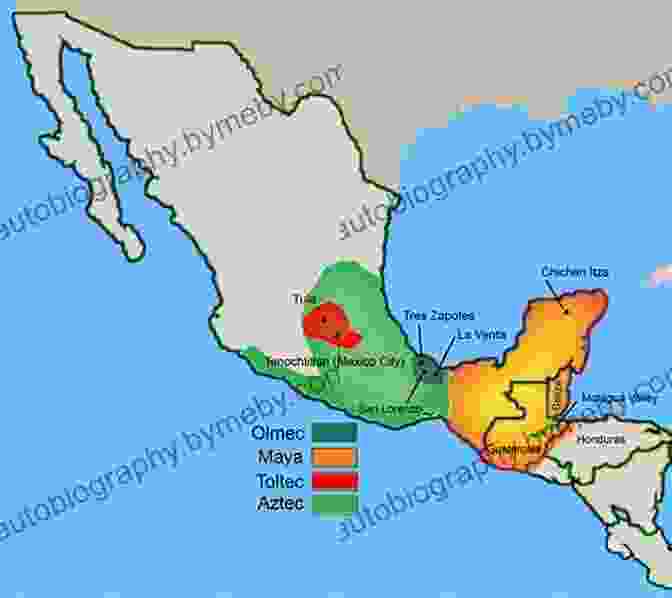
Montezuma II, the ninth Aztec emperor, stands as a towering figure in the annals of Mesoamerican history. His reign marked a golden age of Aztec civilization, characterized by military conquests, administrative reforms, and cultural flourishing.
Through his leadership and patronage, Montezuma II left an enduring legacy that continues to captivate and inspire generations. His story is a testament to the grandeur and complexity of the Aztec Empire, a civilization that once dominated the heart of Mesoamerica.
4.4 out of 5
| Language | : | English |
| File size | : | 8569 KB |
| Text-to-Speech | : | Enabled |
| Screen Reader | : | Supported |
| Enhanced typesetting | : | Enabled |
| Print length | : | 233 pages |
Do you want to contribute by writing guest posts on this blog?
Please contact us and send us a resume of previous articles that you have written.
 Book
Book Novel
Novel Page
Page Chapter
Chapter Text
Text Story
Story Genre
Genre Reader
Reader Library
Library Paperback
Paperback E-book
E-book Magazine
Magazine Newspaper
Newspaper Paragraph
Paragraph Sentence
Sentence Bookmark
Bookmark Shelf
Shelf Glossary
Glossary Bibliography
Bibliography Foreword
Foreword Preface
Preface Synopsis
Synopsis Annotation
Annotation Footnote
Footnote Manuscript
Manuscript Scroll
Scroll Codex
Codex Tome
Tome Bestseller
Bestseller Classics
Classics Library card
Library card Narrative
Narrative Biography
Biography Autobiography
Autobiography Memoir
Memoir Reference
Reference Encyclopedia
Encyclopedia Angie Stanton
Angie Stanton Randy Garutti
Randy Garutti Andrew Bridge
Andrew Bridge Andrew Chaikin
Andrew Chaikin Bram Stoker
Bram Stoker Jack Cotton
Jack Cotton Angela Dejong
Angela Dejong Ann Bausum
Ann Bausum Sandra Lawrence
Sandra Lawrence Andrew Dubbins
Andrew Dubbins Anita Silvey
Anita Silvey Fata Ariu Levi
Fata Ariu Levi Phillip W Simpson
Phillip W Simpson Angus Roxburgh
Angus Roxburgh Francis Beaumont
Francis Beaumont Andrea Rangel
Andrea Rangel Andrew Cotter
Andrew Cotter Andreas Quast
Andreas Quast Brandon Sanderson
Brandon Sanderson Eloise Moran
Eloise Moran
Light bulbAdvertise smarter! Our strategic ad space ensures maximum exposure. Reserve your spot today!
 Paulo CoelhoHow We Made Great American Art: Unveiling the Stories Behind Iconic Creations
Paulo CoelhoHow We Made Great American Art: Unveiling the Stories Behind Iconic Creations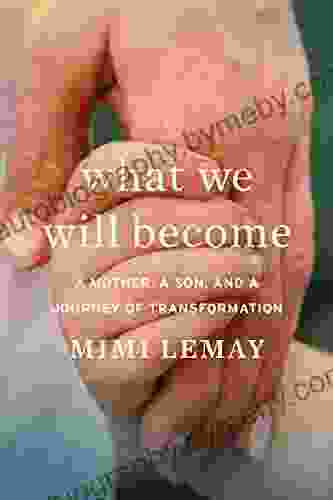
 Charles ReedWhat We Will Become: Embark on an Extraordinary Journey into the Future of...
Charles ReedWhat We Will Become: Embark on an Extraordinary Journey into the Future of... Braeden HayesFollow ·3.1k
Braeden HayesFollow ·3.1k Juan RulfoFollow ·16.2k
Juan RulfoFollow ·16.2k Jonathan FranzenFollow ·7.8k
Jonathan FranzenFollow ·7.8k Julio Ramón RibeyroFollow ·6.4k
Julio Ramón RibeyroFollow ·6.4k Howard PowellFollow ·15.6k
Howard PowellFollow ·15.6k Dave SimmonsFollow ·10.5k
Dave SimmonsFollow ·10.5k William FaulknerFollow ·8.8k
William FaulknerFollow ·8.8k Kelly BlairFollow ·17.2k
Kelly BlairFollow ·17.2k

 Bryce Foster
Bryce FosterCelebrate the Luck of the Irish: Unveiling Saint...
As the verdant hues of spring brush...

 Chase Simmons
Chase SimmonsCody Rodeo: A Photographic Journey into the Heart of the...
Step into the arena of the...

 David Mitchell
David MitchellUnveiling the Enchanting World of Door County Quilts: A...
Step into the Heart of Amish Country in...

 Floyd Powell
Floyd PowellCowboy Chatter: Unraveling the Enigmatic Tales of the Old...
Step into the...

 Ismael Hayes
Ismael HayesUnlock Content Marketing Mastery: How to Create...
In today's digital landscape, content is...

 Boris Pasternak
Boris PasternakMore Than 200 Hardball Questions For The Thinking Fan
The Ultimate Baseball Trivia Challenge Are...
4.4 out of 5
| Language | : | English |
| File size | : | 8569 KB |
| Text-to-Speech | : | Enabled |
| Screen Reader | : | Supported |
| Enhanced typesetting | : | Enabled |
| Print length | : | 233 pages |


